Ontario’s twin cities of Kitchener-Waterloo both have downtown parks that surround small lakes. Waterloo Park, founded in 1893, was built around Silver Lake and upon completion was dubbed the “Jewel of the City.” Three years later and two miles distant, in what must have been a bit of twin rivalry, Kitchener created Victoria Park by transforming a plot of swampland on the site into Victoria Park Lake. Kitchener officials declared that the park built around the lake was “The City’s Crown Jewel.”
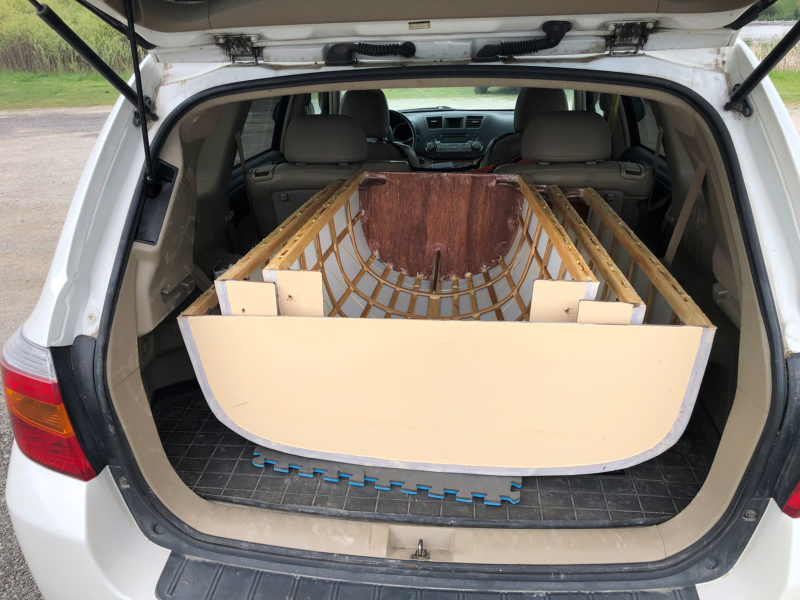 Photographs by and courtesy of Matt Morris
Photographs by and courtesy of Matt MorrisFor boating lakes that are outside of the bicycle’s range, the boat fits in the back of Matt’s car.
There was, unfortunately, a bit of a lapse in civic pride through the 20th century and both lakes filled with silt from the creeks that fed them. Waterloo’s “Jewel” became known as Mud Lake among the locals and was so foul in the summer of 1995 that hundreds of waterfowl that had settled upon it died of botulism. In the fall of that year, motivated by the dead ducks, the city created a seven-year plan to dredge the lake and restore the wetlands around it. Kitchener eventually followed suit and decided it was time to dredge Victoria Park Lake, and in 2011 scooped over 85,000 tons of sediment from the lake bottom.
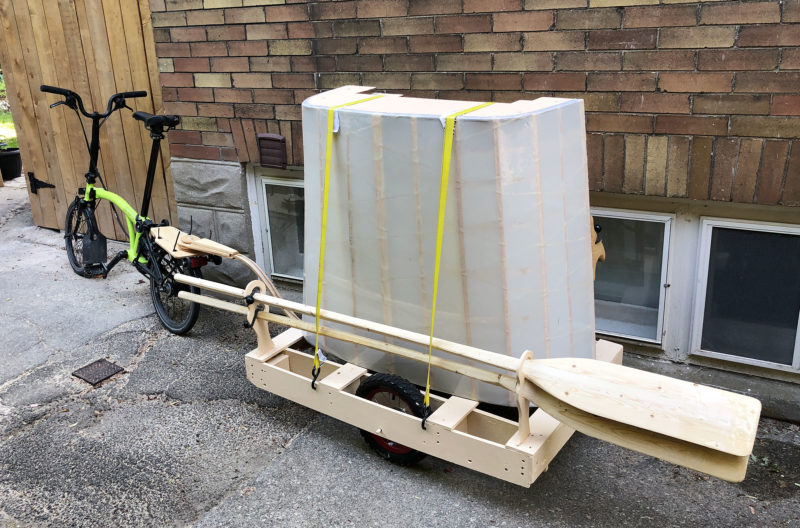
Matt tows his trailer behind a folding bicycle. He used to be a teacher and rode the bicycle to get to school where he could store it out of the way in his classroom.
In between the two lakes, on the Waterloo side of the twin-city divide, is the home of Matt Morris. He’s an avid cyclist and the Iron Horse Trail, a bike path that connects the lakes, runs right by his house. The ride north to Silver Lake is slightly less than a mile; south to Victoria Park Lake is over 2 miles. He visits the lakes often and has been watching ongoing improvements to both parks.
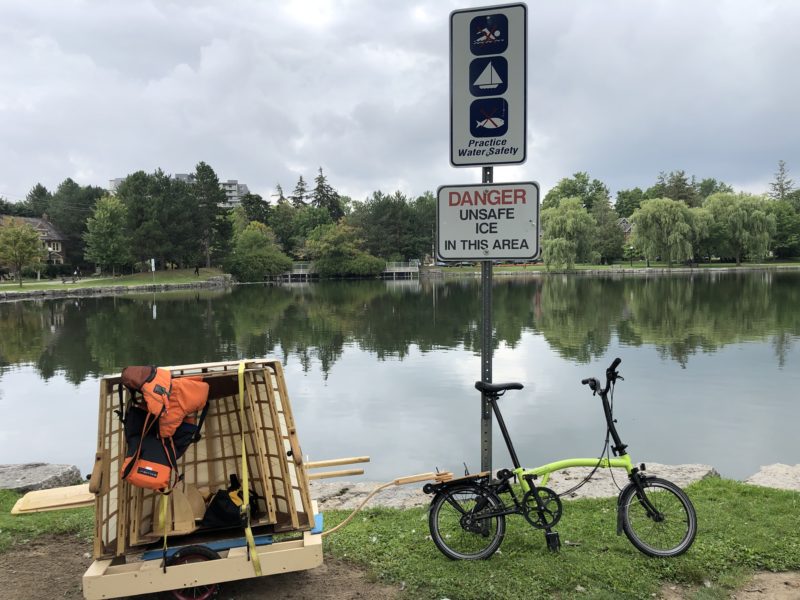
Matt parked his rig at the Victoria Park sign that inspired the dream to build his boat and the trailer that transports it.
On one of his rides to Victoria Park he noticed a blue and white sign at the lake’s side. On it were three icons: one with a swimmer and another with a fish swimming under a hook and line. Each of those was crossed with a red X. The third icon pictured a sailboat—without an X. “Each time I was in the area,” he writes, “I started to dream of building a boat that I could tow behind my bicycle.”
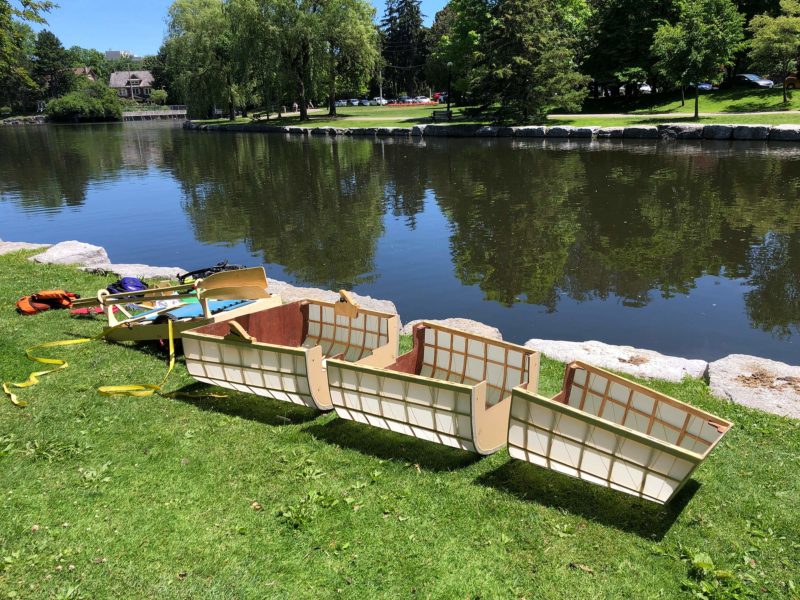
Each pair of bulkheads is held together with four 1/4″ bolts, all set in holes above the waterline to avoid the need for gaskets to prevent leaks.
Matt’s dreams remained dreams until Waterloo announced plans for some dredging and the installation of a boat dock at Silver Lake. He would have two lakes he could enjoy with a boat. That set him in motion. While he first thought about buying a kit for a two-piece rowboat, he realized that designing his own boat, and making it nest in three pieces would make the project much more interesting. He began by sketching shapes and construction details for a skin-on-frame nesting boat in a blank book.

While the trailer gets locked up on shore at the lakes, the bicycle folds up small enough to have a place aboard the boat.
His first idea was to make a boat with transoms fore and aft and curved sides. He made scaled patterns from paperboard cut from a Froot Loops cereal box and a Blue Moon Belgian White Ale carton. Unhappy with the shape and the nesting function, he chose to work with an overall plan form of a trapezoid. He could divide it into three smaller trapezoids that neatly fit one inside the other. Packed for travel, the boat would fit in the back of his square-back car or ride on a bike-towed trailer.
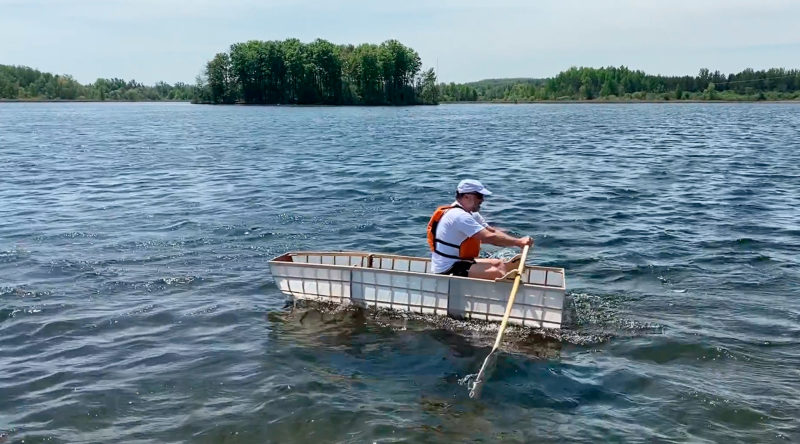
Matt started out with a bench that spanned the bulkheads but discovered that a small seat supported by the aft bulkhead provided good trim for the boat. He made his economical oars with construction-grade 2×4s.
With his plans and patterns finished, he cut the boat’s six meranti plywood bulkheads at a friend’s woodshop; the bandsaw and belt sander made quick work of the largest parts of the boats. Stringers set in chisel-trimmed mortices established the shape of the three sections. Matt steam-bent ash frames inside of the stringers and clamped the intersections while they cooled and set. When the ash was dry, he epoxied the intersections of frames and stringers. Kevlar roving, applied on the diagonal like the pattern on an argyle sock, reinforced the framework. Matt applied a skin of 9-oz Dacron and coated it with a two-part urethane.
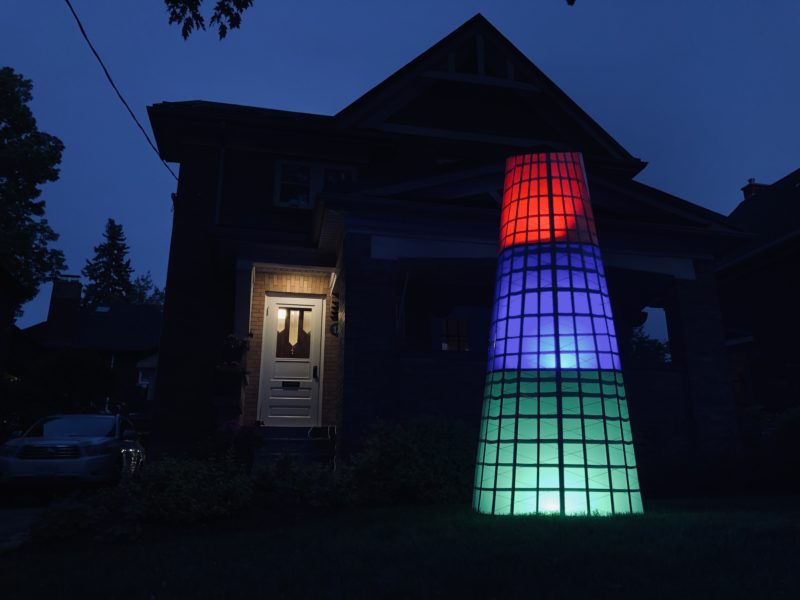
Boats certainly have a sculptural quality and Matt uses his UB1000 at home as an illuminated work of art in his front yard.
The boat goes by the name UB1000 as Matt’s first version of his Urban Boat. He equipped it with oars and a sail and built the trailer he had envisioned for getting it by bicycle to and from Silver Lake and Victoria Park Lake, documenting the whole process on his blog. He now enjoys rowing and sailing the lakes that are just minutes by bike from his home. The launching of his boat on the two lakes is, perhaps, the realization of the twin-city’s Field of Dreams vision: If you dredge it, they will come. ![]()
Do you have a boat with an interesting story? Please email us. We’d like to hear about it and share it with other Small Boats Magazine readers.
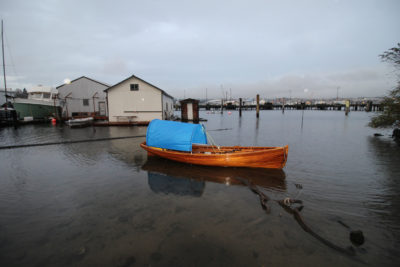
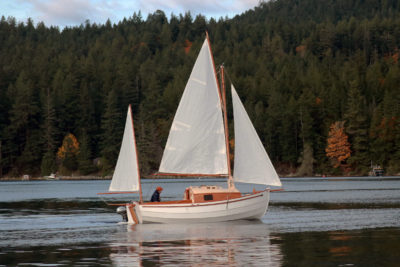
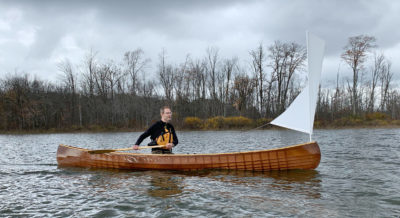
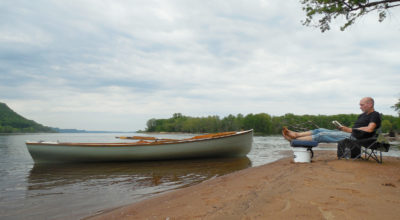
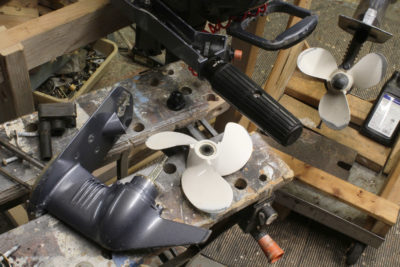
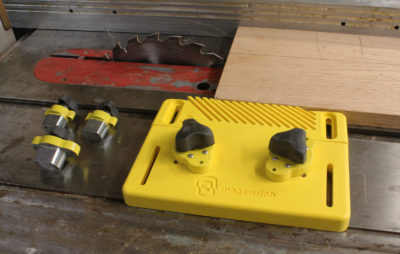
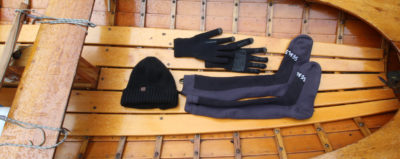
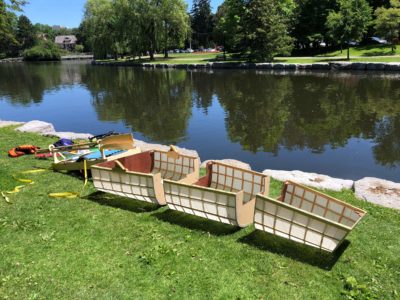
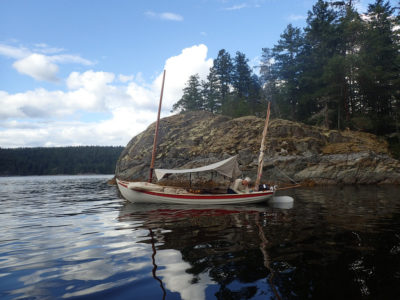
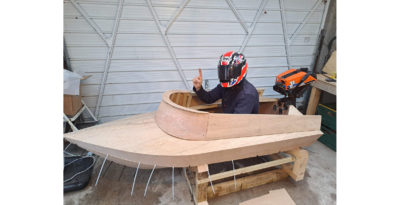
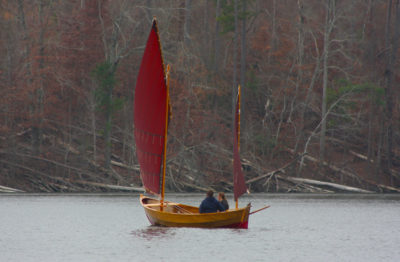
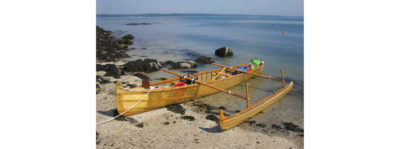
This is a very unique and interesting boat. I cannot envision the design of a sail rig for it. Does Matt have any photos of the rig and of him sailing to share with us? Great job on the design.
Hi there, Nels,
You can see more photos of the boat experimenting with the sailing rig, and videos of Matt sailing here: https://urbanboatproject.weebly.com/
Phil Bolger, in Boats With an Open Mind, designed a take-apart boat that is divided longitudinally rather than crosswise, his reasoning being that sometimes it’s width rather than length that creates space challenges. The boat is only 5’6″ long, and has a narrow center section, with two “sponsons” flanking each side. These are fully enclosed, making the boat as unsinkable as a rubber raft. When disassembled, the sponsons stow inside the center section. He shows it carrying one or two people, with two rowing positions. He concedes it is quite heavy, but says it rows well, up to the inherent speed limit of such a short boat.
I have built a couple of very short dinghies, one a 6′ 6″ V-bottom pram by Al Mason, the other a 6′ flat-bottomed pram by Billy Atkin. Both boats rowed nicely, carrying well between strokes of the oars. At the anchorage, I could easily outdistance anyone trying to make do with a little Livingston dinghy. The Livingston stopped dead between every oar stroke. Atkin claimed his, dubbed TINY RIPPLE, could serve as a lifeboat, with a couple of built-in air chambers, but if I had to stake my life on one, I’d pick the Bolger boat.
At first sight I was struck with the beauty, engineering and craftsmanship of your captivating work of art!
The strength and lightness are immediately evident and the nesting is very neat.
Your illuminated boat looked fantastic outside your home, quite unique.
The Brompton is the perfect tow vehicle, being compact enough to stow aboard and was my choice for towing an amphibious bicycle camper.
Thank you for the kind comments.
I just saw this note years later.
It was certainly a fun challenge to design and build this boat.